
Category: R

Recently I have seen many posts about which IDE for R people prefer, with minimalists list of options, usually of size 2: R Studio and VS Code. I guess that some people forget, or many don't even know about two of the most powerful text editors that have been helping developers for a few decades.

About A few days ago I finished reading the book Engineering Production-Grade Shiny Apps by Colin Fay, Sebastien Rochette, Vincent Guyader and Cervan Girard. It was an easy read so, I decided to move forward and create my first shiny app with golem. But before doing that I wanted to read some comments or opinions about it and I realized that there is not so much about it outside of the golem team.
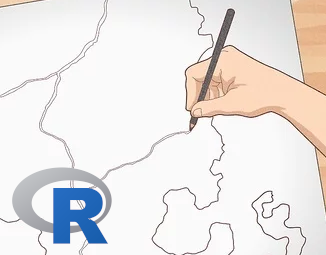
This post is part of the series maps-app.
You can also find the current state of the project under my GitHub repo mapic.
Scope of this post We are creating maps of data showing changes over a span of time for different countries and pointing at all kinds of cities. That basically means that we need to map any region of the world with R.
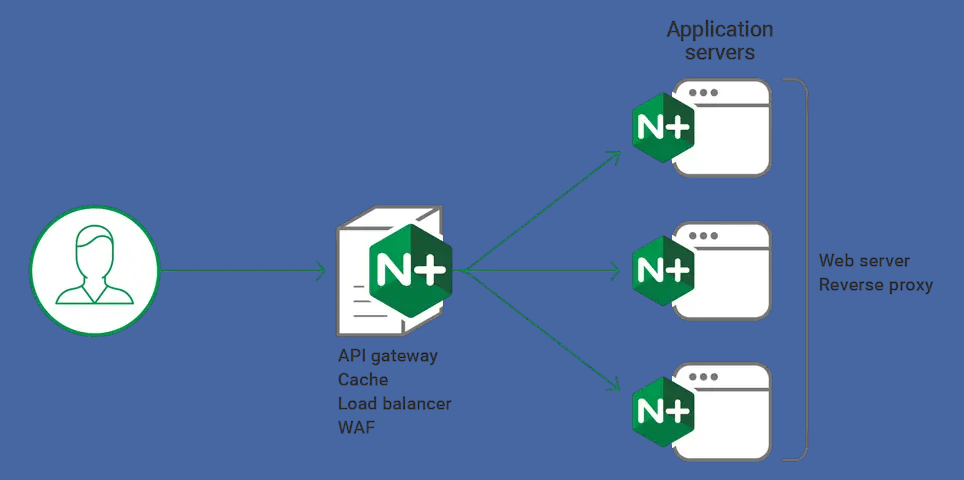
I have been off from the blog lately due to a big load of personal projects. Just lately I got a few days off and found time to work on my personal website, to be ready soon. That made me get more into Nginx configuration, where I consider myself a total rookie.

This post is part of the series maps-app.
You can also find the current state of the project under my GitHub repo mapic.
Scope of this post We are creating maps of data showing changes over a span of time for different countries and pointing at all kinds of cities. That basically means that we need to map any region of the world with R.

About this post This post is part of the series maps-app.
We are creating maps of data showing changes over a span of time for different countries and pointing at all kinds of cities. That basically means that we need to map any region of the world with R. Today there are all kinds of packages and techniques to do that.

Sobre este post Estamos creando mapas de datos que muestran los cambios durante un período de tiempo para diferentes países y orientado a todo tipo de ciudades. Esto básicamente significa que necesitamos mapear cualquier región del mundo con R. Hoy en día existen todo tipo de paquetes y técnicas para hacerlo.

Andrew Couch has a nice video about deploying a shiny app using docker. He goes from the very basics, that asume no knowledge of docker whatsoever, which is the position of many R users like myself. I’ve been working in some shiny app lately, and although I’ve never needed docker so far, I decided to start learning it because I can already foresee the future when it won’t be the case.

Andrew Couch tiene un video genial sobre como poner una aplicación shiny en docker. El video está en inglés, pero bien vale la pena. Va desde lo más básico, sin asumir ningún conocimiento de docker, lo cual es la situación de muchos usuarios de R como yo mismo. Últimamente he estado trabajando en unas aplicaciones Shiny y a pesar de que nunca he necesitado de Docker, ya puedo preveer el momento en que esto cambiará, por lo que decidí comenzar a aprender como usarlo.

A few weeks ago I opened an account on Digital Ocean to start my own cloud server. Not long after that I took a workshop on Shiny and, although it was too technical with nothing new for me, I learn a couple of things unrelated to R. The speaker was talking about the importance of making your portfolio showing your apps instead of sharing the link to your code as most of us do.
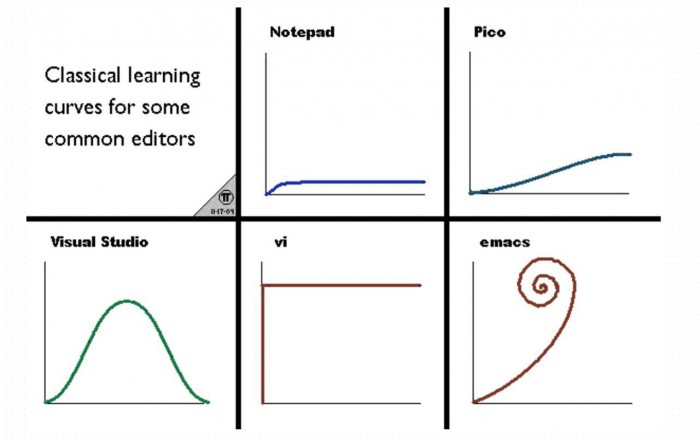
Easy Emacs To start using R, or almost anything else in Emacs you basically need to know 3 things: 1) How to move in Emacs, meaning understanding what is what and learning a few key commands; 2) What is the configuration file and how to use it and 3) How to use packages to extend Emacs.

Introducción El análisis exploratorio de datos (EDA en inglés, “Exploratory Data Analysis”) es una de las herramientas más útiles en varias áreas de análisis de datos. El concepto de EDA ha sido utilizado popularmente en los últimos años para referirse a los procesos de exploración primaria de un grupo de datos.

This post is part of the series maps-app.
You can also find the current state of the project under my GitHub repo mapic.
Scope of this post This is the second part of the series to create a map of any region of the world with R.
We are creating maps of data showing changes over a span of time for different countries and pointing at all kinds of cities.

Pueden encontrar todas las publicaciones en este tema bajo las series maps-app.
También pueden encontrar el estado actual del proyecto en mi GitHub repo mapic.
Sobre este post Esta es la segunda parte de las series de cómo crear mapas de cualquier región del mundo con R. De antemano me disculpo por detalles que puedan encontrar en la traducción, el post original lo creé en Inglés y el trabajo de traducción puede ser excesivo si voy a cada detalle.
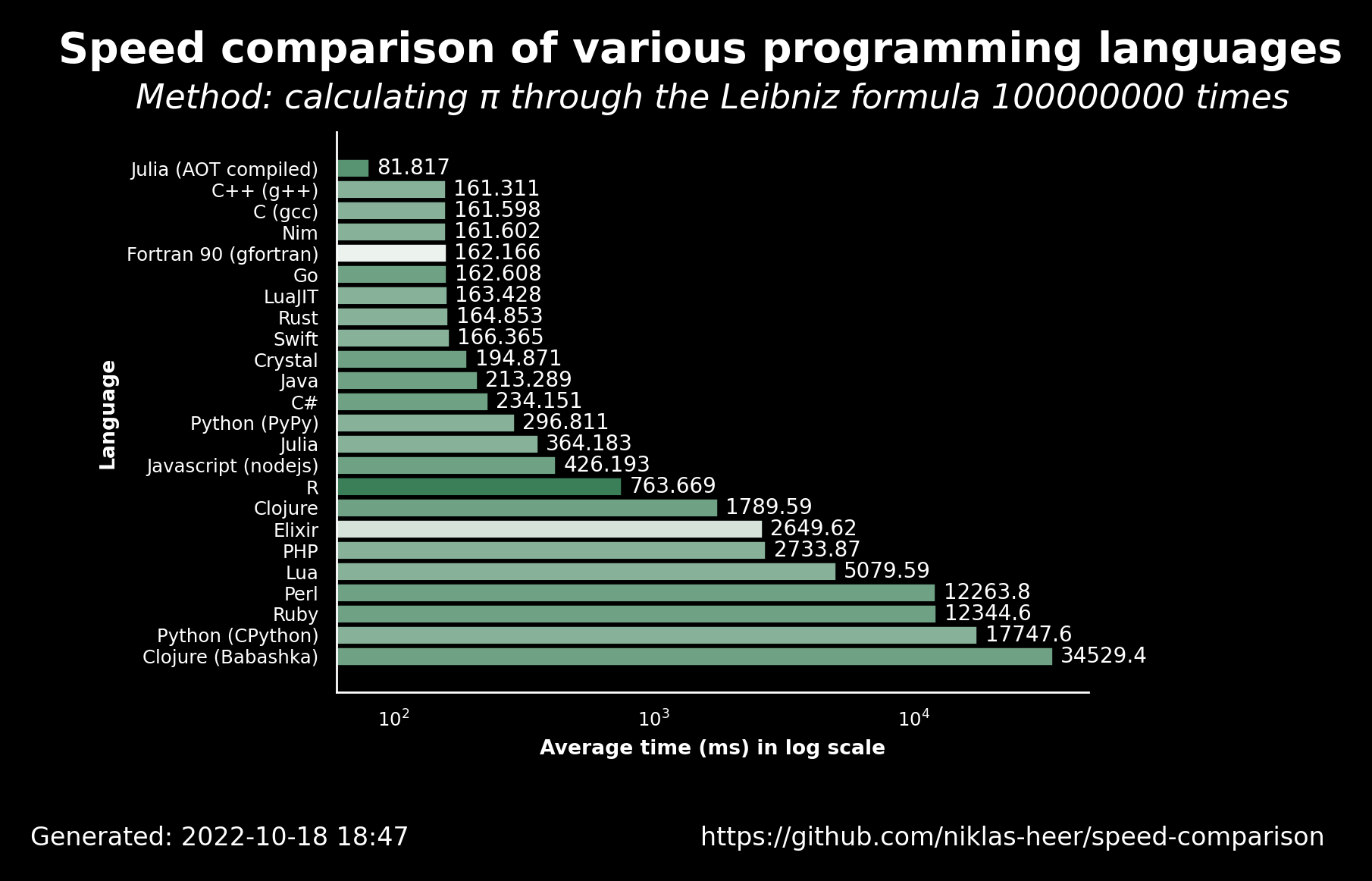
A couple of years ago I was interested in the efficiency of R when it comes to time processing and management of memory and I read a few blog posts about this topic, particularly pointing at the fact that R hasn’t been designed to be a very efficient language, especially when it comes to big data processing, and this could be its doom at some point in the future.

This post is part of the series maps-app.
You can also find the current state of the project under my GitHub repo mapic (including the Spanish versions).
Scope of this post When you prepare for a job interview one of the questions they always tell you to prepare is “What are you most proud of?

Pueden encontrar todas las publicaciones en este tema bajo las series maps-app.
También pueden encontrar el estado actual del proyecto en mi GitHub repo mapic.
Sobre esta entrada Cuando nos preparamos para una entrevista de trabajo, una de las preguntas que más recomiendan preparar es “Menciona el proyecto del que estés más orgulloso?

Acerca de este post. Este es mi primer post en español. Es en realidad la traducción de un post que escribí originalmente en inglés hace un par de meses. Pueden ver el post original aqui. Espero que sea útil para la comunidad hispanohablante de usuarios de R.
Este post se basa en un trabajo reciente donde mi tarea fue la revisión y depuración de piezas de código pequeñas o simples que pueden resultar en consejos prácticos y rápidos para otros usuarios de R, especialmente principiantes o personas sin mucha experiencia en el uso de R.

Welcome to R minitutorials of R White Dwarf Since the beginning of this year I’ve been forced to abandon completely the blog for countless and rather abstract personal reasons that include personal health, family matters and changes in my daily activities including volunteer work as well as main job. As part of the last, I finally got hired for a position as R developer, which brings great joy to me.
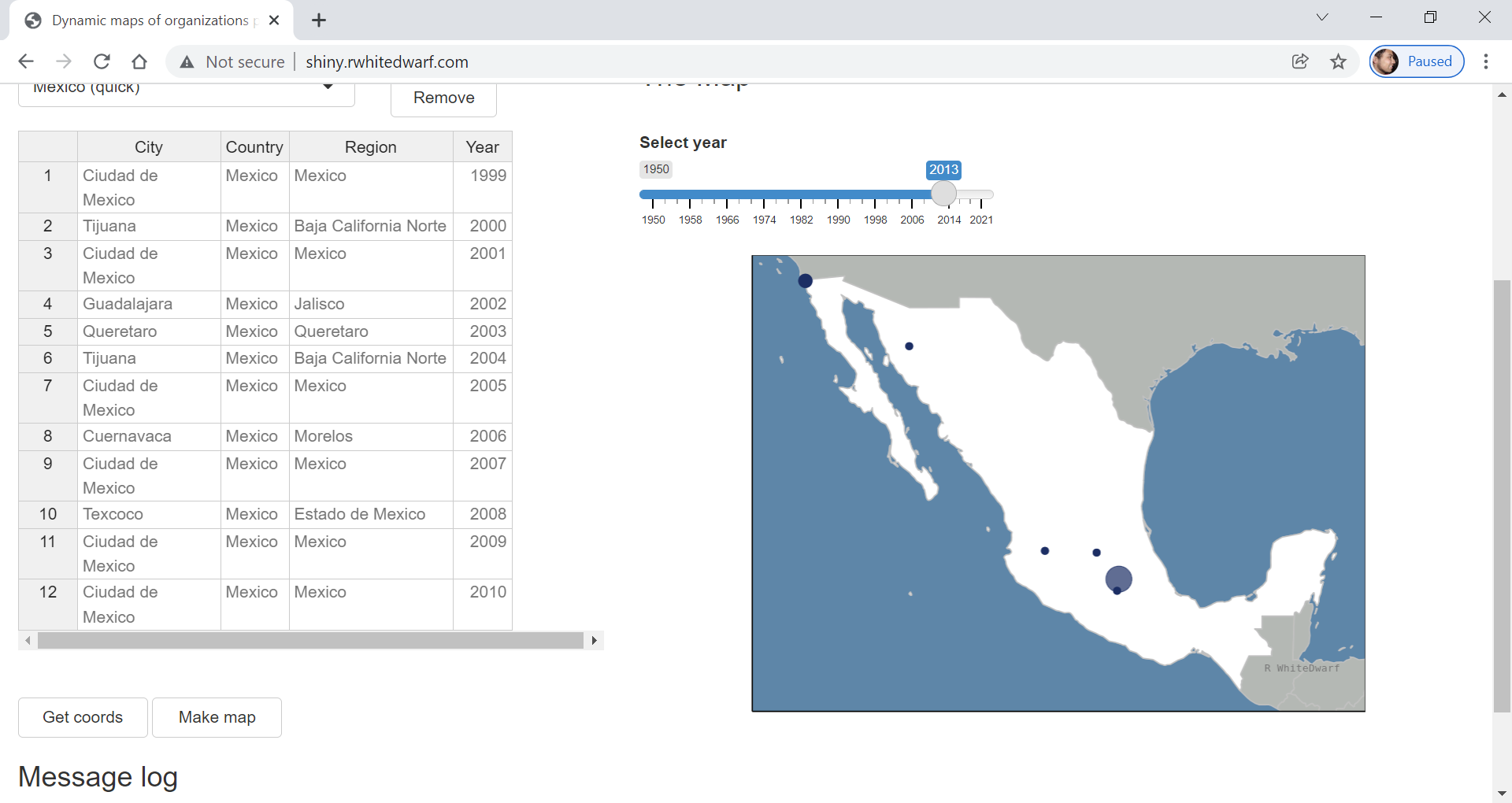
I am happy and excited as I have just deployed my first shiny app on the web. You can find it running at shiny.rwhitedwarf.com (NOTE: I don’t have ssl certificate so, your browser might tell you that is not secure, but you can trust me that there’s no risk). I have created a few shiny apps in the past but I never deployed one, especially in an owned domain.
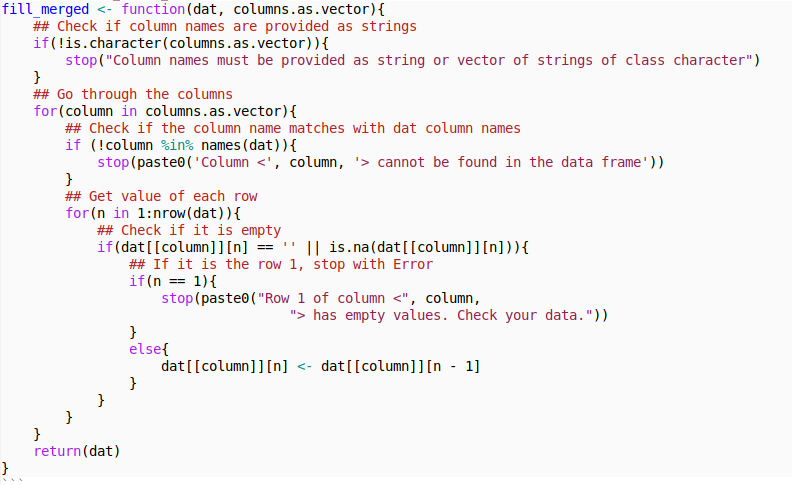
This post continues the topic of functions in R. You can see our previous post if you want to understand the basics but it is not strictly necessary. Here we will go into detail about for loops and if statements in R, two key elements of any function. We are going to define a process, map it in a step-by-step approach and wrape it in a function that can repeat it automatically.

Background This is the first post of R with White Dwarf and I decided to start this blog with a basic tutorial. There is already a lot of information in the web about getting started with R. With a simple google search you can easily find info on how to install it, how to use R studio or other text editor, learn about the basic functions and concepts, what is a vector, a data frame, how to use them, etc.
Table of Contents
External Links
latest Posts
Emacs as IDE for R
Recently I have seen many posts about which IDE for R people prefer, with minimalists list of options, usually of size 2: R Studio and VS Code. I guess that some people forget, or many don't even know about two of the most powerful text editors that have been helping developers for a few decades.
2024-2-11
My first Golem app
About A few days ago I finished reading the book Engineering Production-Grade Shiny Apps by Colin Fay, Sebastien Rochette, Vincent Guyader and Cervan Girard. It was an easy read so, I decided to move forward and create my first shiny app with golem. But before doing that I wanted to read some comments or opinions about it and I realized that there is not so much about it outside of the golem team.
2023-9-29
Object Oriented Programming in R: S3
This post is part of the series maps-app.
You can also find the current state of the project under my GitHub repo mapic.
Scope of this post We are creating maps of data showing changes over a span of time for different countries and pointing at all kinds of cities. That basically means that we need to map any region of the world with R.
2023-9-13